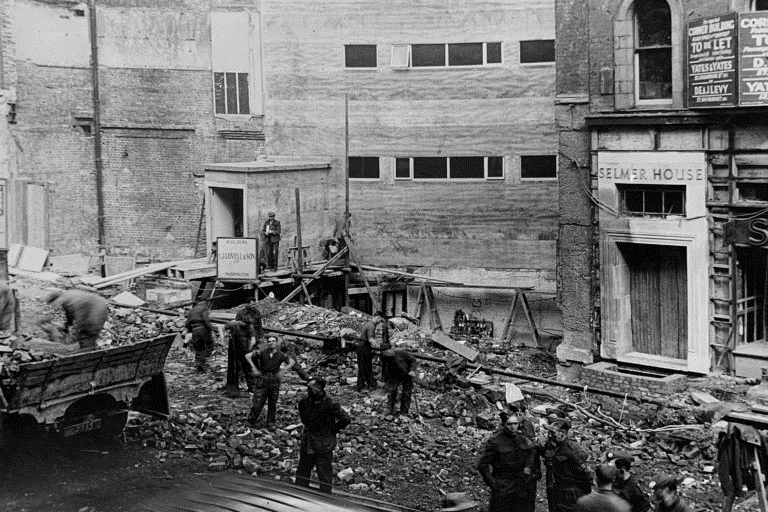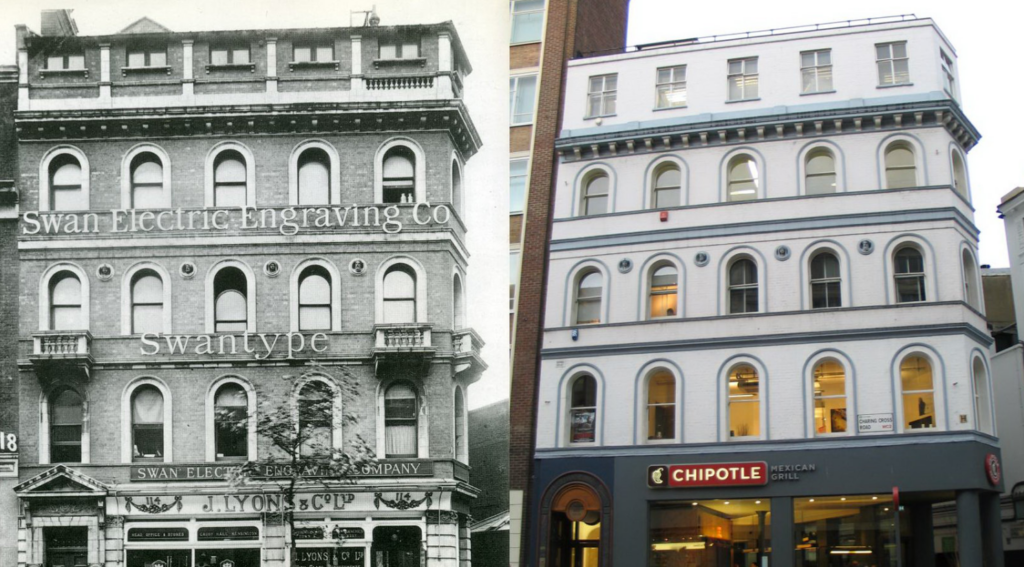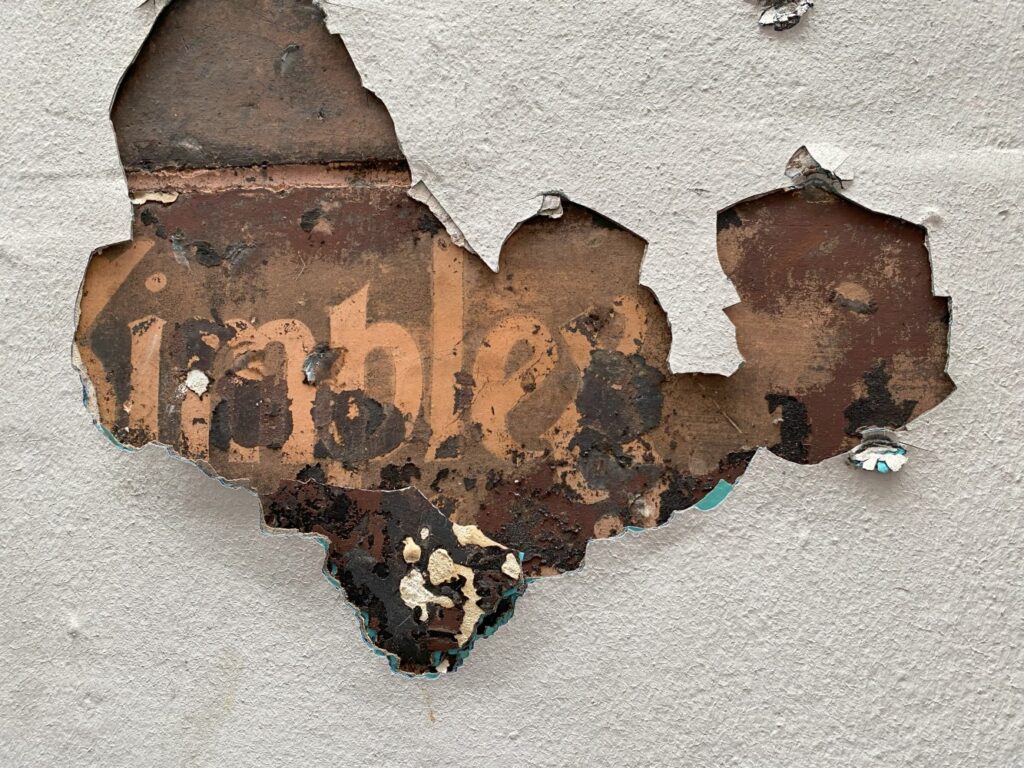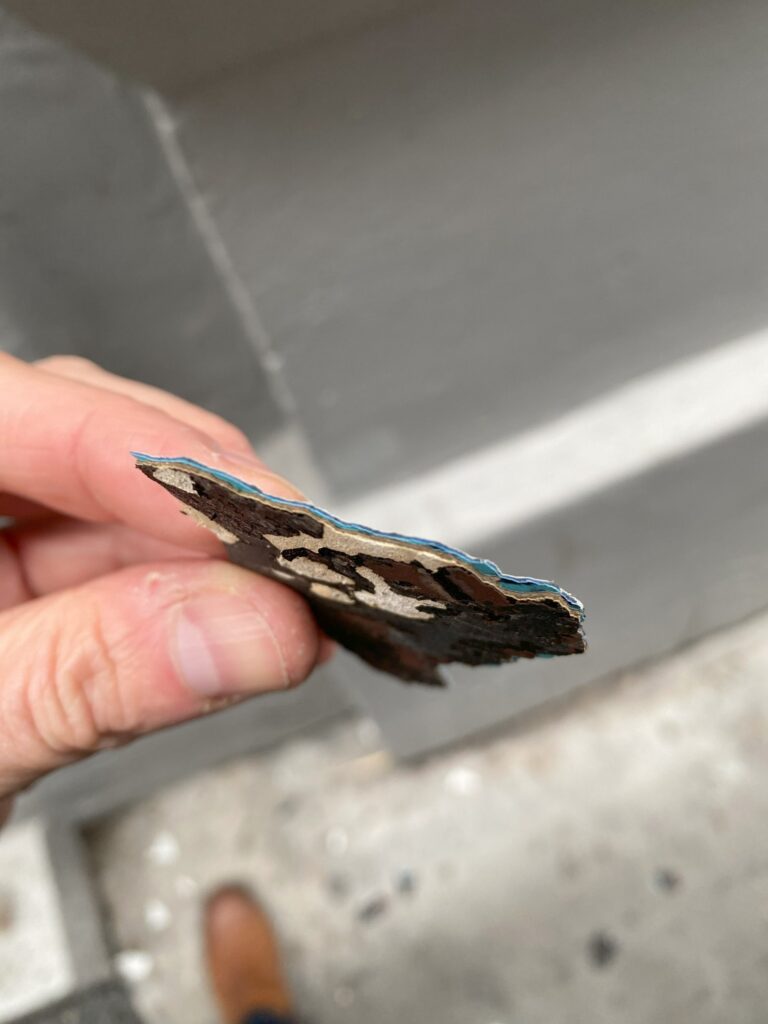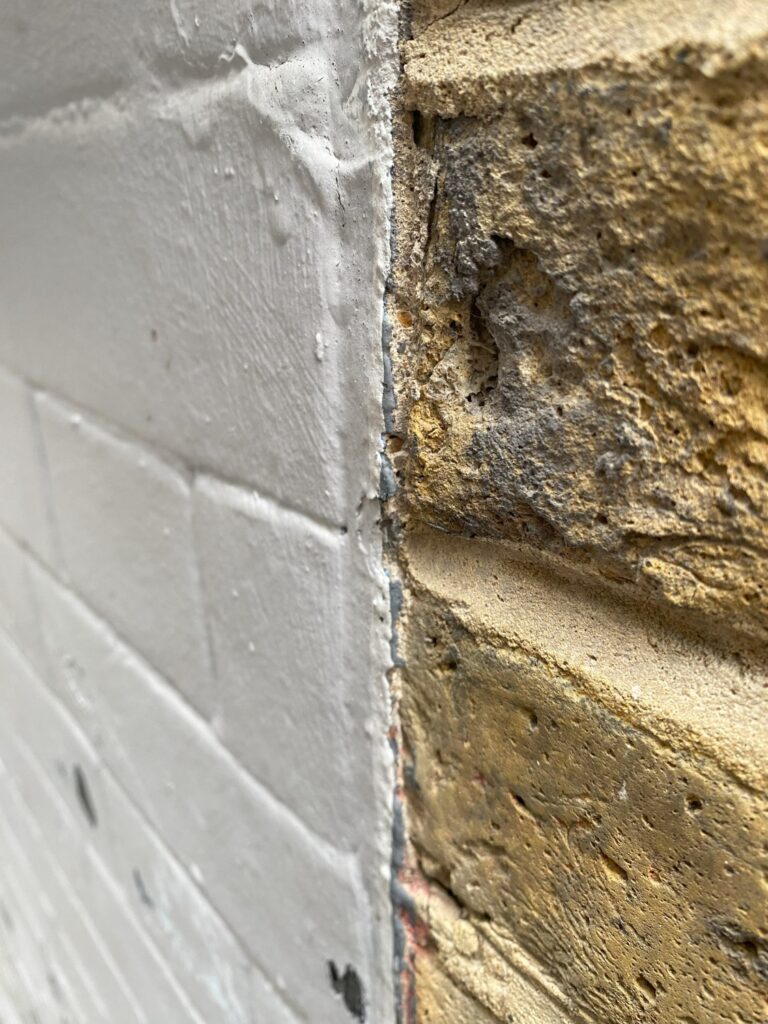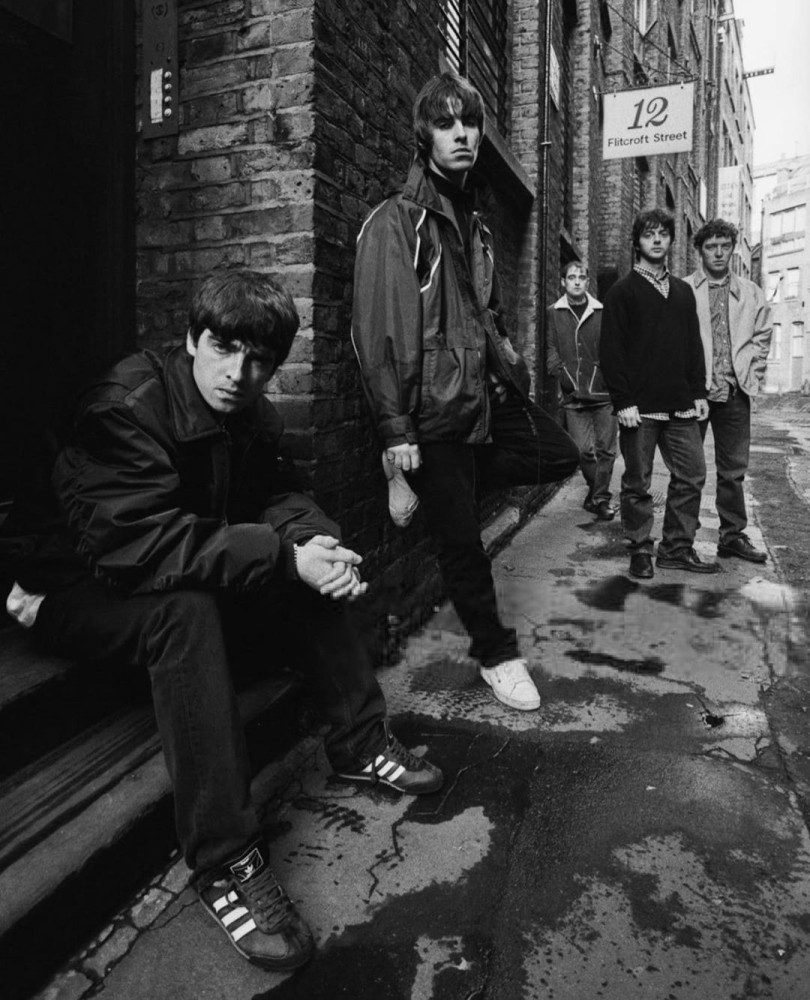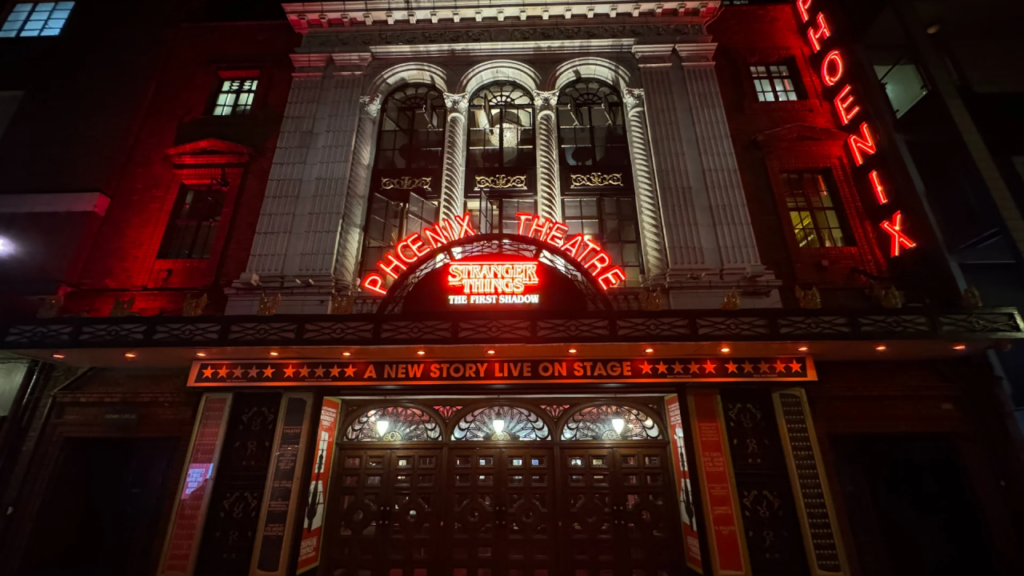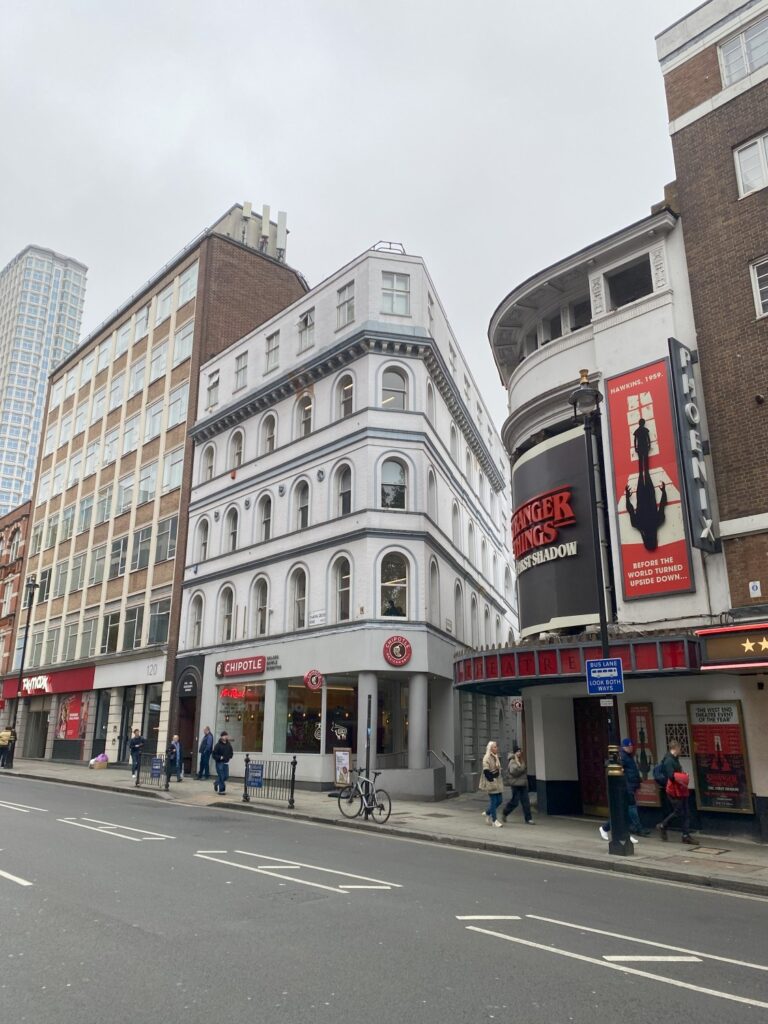Our initial surveys have been quite light as more intrusive works are planned for early 2025. One of the team’s objectives, is to help return the building to its former honest brick frontage. Therefore, removal of the paint is naturally up for technical discussion in relation to the available and appropriate methods, which one would think par for the course, not quite. If the buildings original intent was to be painted, why build in brick, surely render affords the ease of adding colour and more forgiving bricklaying? It was uncommon for buildings of this era to be painted immediately. Typically, this was done later in efforts to extend life. Painting can upheave a façade, hiding bumps and bruises accrued over time. This is relatively low-cost refurbishment that is not new and not rare.
Here’s the Client and I playing ‘try to remove as little paint as possible to guess the original sign before the other’ – it was a draw. We didn’t do this solely to reveal a historic sign; although nice. We wanted to get samples for lab testing for lead content, informing the method of paint removal later.
